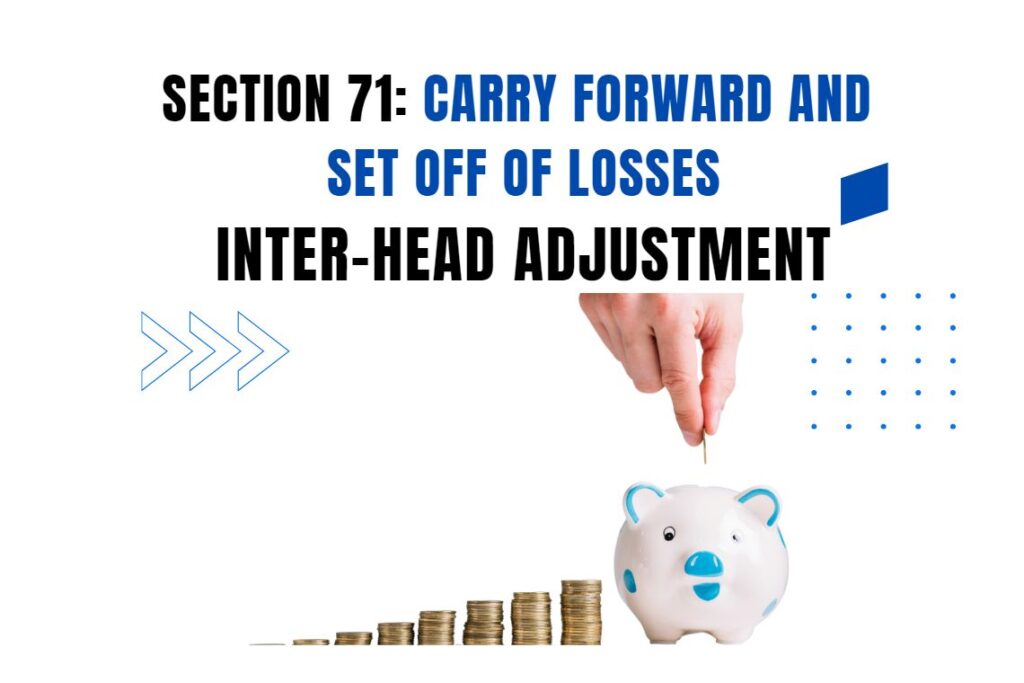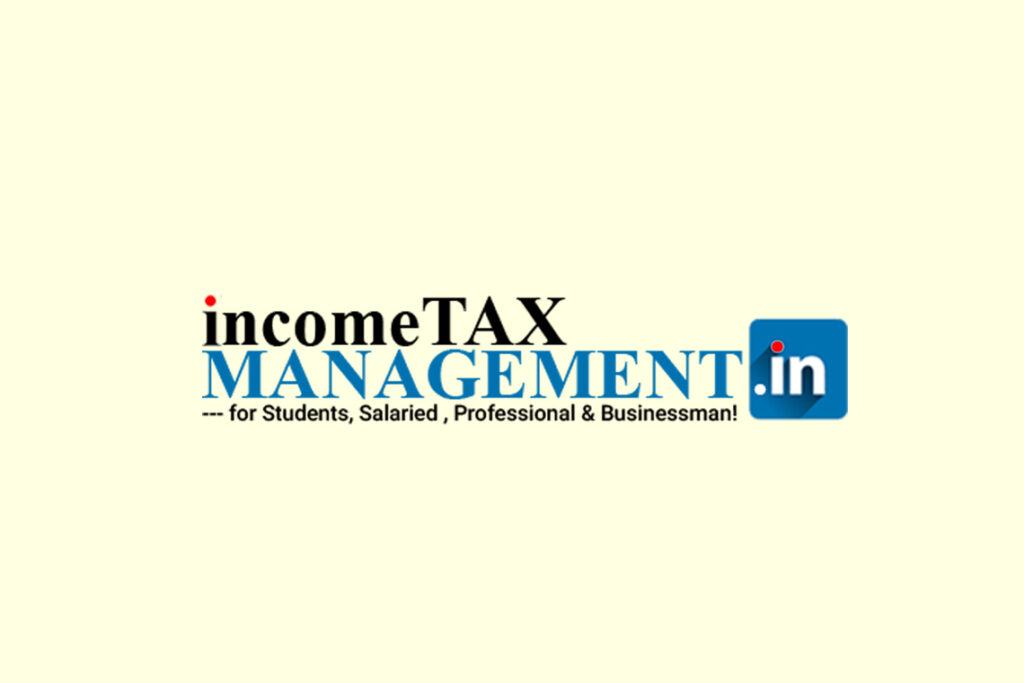Understanding Section 71: Inter-Head Adjustment
Section 71 of the Income Tax Act, 1961 allows taxpayers to set off losses from one head of income against income from another head in the same financial year. This is called inter-head adjustment and comes into play after intra-head adjustment (Section 70) has been exhausted.
Key Features of Section 71
- Order of Application:
- First apply intra-head adjustment (Section 70)
- Then apply inter-head adjustment (Section 71)
- Applicable Heads:
- Losses from any head (except “Salary”) can be set off against income from other heads
- Salary income cannot have losses and cannot be used to absorb losses
- Exceptions:
- Speculative business losses (Section 73)
- Loss from owning/maintaining race horses (Section 74A)
- Long-term capital losses (Section 74)
- Losses from exempt sources
How Inter-Head Adjustment Works
1. Business/Profession Loss
- Can be set off against:
- Salary income
- House property income
- Capital gains
- Other sources income
Example:
- Business loss: ₹3,00,000
- Salary income: ₹5,00,000
- Taxable income: ₹5,00,000 – ₹3,00,000 = ₹2,00,000
2. House Property Loss
- Under old tax regime:
- Can be set off against any other head up to ₹2,00,000
- Under new tax regime:
- No inter-head adjustment allowed
Example (Old Regime):
- House property loss: ₹2,50,000
- Salary income: ₹6,00,000
- Adjustment allowed: ₹2,00,000
- Taxable income: ₹6,00,000 – ₹2,00,000 = ₹4,00,000
- Remaining ₹50,000 can be carried forward
3. Capital Gains Losses
- Short-term capital loss:
- First set off against capital gains (Section 70)
- Cannot be set off against other heads
- Long-term capital loss:
- Only against long-term capital gains
Exceptions to Inter-Head Adjustment
- Speculative Business Losses (Section 73):
- Can only be set off against speculative business profits
- Cannot be adjusted against any other head
- Loss from Race Horses (Section 74A):
- Only adjustable against income from same activity
- Exempt Income Losses:
- Cannot be set off against taxable income
- New Tax Regime Restrictions:
- No inter-head adjustment for house property losses
- No carry forward of house property losses
Carry Forward of Unadjusted Losses
If losses cannot be fully adjusted under Section 71:
- Business losses: Can be carried forward for 8 years (Section 72)
- House property losses: Can be carried forward for 8 years (Section 71B)
- Capital losses: Can be carried forward for 8 years (Section 74)
Important: Most losses require timely filing of return (by July 31 normally) to be eligible for carry forward.
Practical Example
Scenario:
- Salary income: ₹7,00,000
- Business loss: ₹2,50,000
- House property loss: ₹1,80,000 (old regime)
- Capital gains (STCG): ₹1,00,000
- Other income: ₹50,000
Computation:
- Intra-head adjustment (Section 70):
- No adjustment possible as all are separate heads
- Inter-head adjustment (Section 71):
- First set off house property loss (max ₹2 lakh):
- ₹1,80,000 against salary income
- Then set off business loss:
- ₹2,50,000 against remaining salary income
- Salary income after adjustment: ₹7,00,000 – ₹1,80,000 – ₹2,50,000 = ₹2,70,000
- First set off house property loss (max ₹2 lakh):
- Final taxable income:
- Salary: ₹2,70,000
- STCG: ₹1,00,000
- Other income: ₹50,000
- Total: ₹4,20,000
Key Takeaways
✔️ Inter-head adjustment allows loss adjustment across different income categories
✔️ Applies after intra-head adjustment (Section 70) is exhausted
❌ Does not apply to speculative losses, race horse losses, and certain capital losses
⚠️ New tax regime restricts house property loss adjustments
📅 Unadjusted losses can be carried forward subject to conditions
This provision enables taxpayers to optimize their tax liability by allowing comprehensive adjustment of losses across different income categories in the same financial year.






